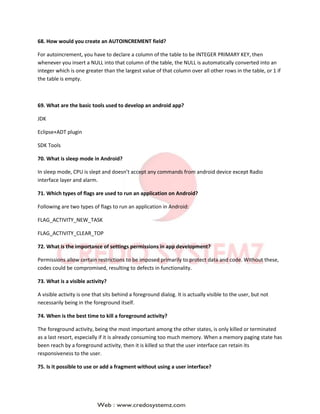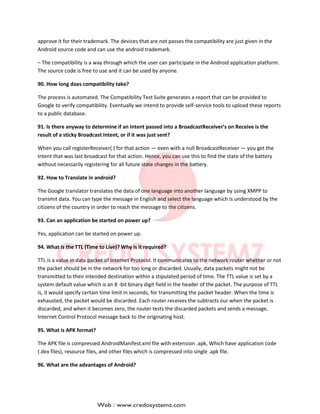Android uses Dalvik Virtual Machine (DVM) which requires a special bytecode format called .dex files. The DVM executes multiple virtual machines efficiently and runs Java bytecode, converting it to .dex format. Activities dictate the user interface and handle interactions, services handle background processes, broadcast receivers handle communication between apps and the OS, and content providers manage data storage. The Android SDK includes tools like the emulator, DDMS, and ADB for app development.
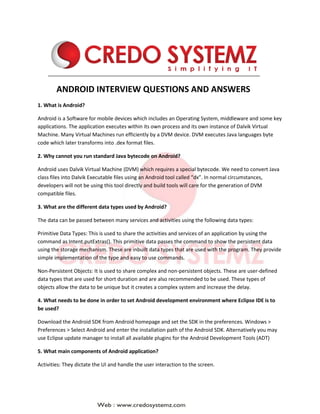
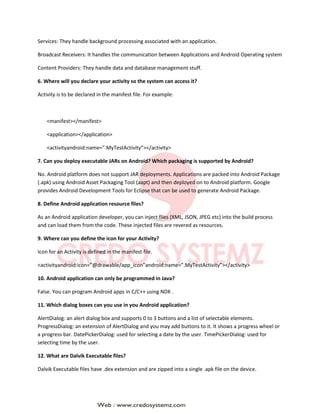




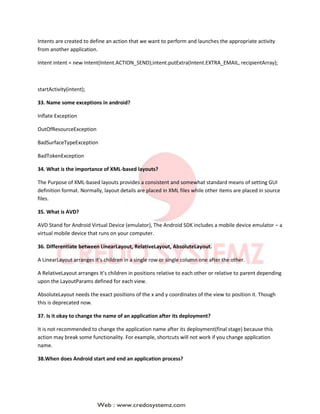


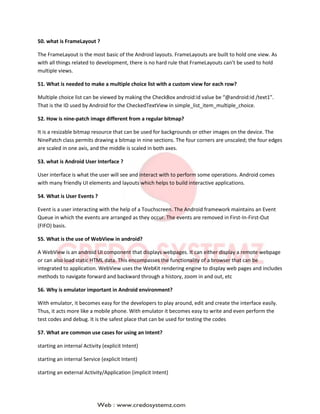

![res/menu/ -> menu specification files
res/raw/ -> raw files like a CSV file, movie clip or audio clip (mp3)
res/xml/ -> general XML files
63. What is the function of an intent filter?
Because every component needs to indicate which intents they can respond to, intent filters are used to
filter out intents that these components are willing to receive. One or more intent filters are possible,
depending on the services and activities that is going to make use of it.
64. What is a StateListDrawable?
A StateListDrawable is a drawable object defined in the XML that allows us to show a different
color/background for a view for different states. Essentially it’s used for Buttons to show a different look
for each state(pressed,focused, selected, none).
65. How does RecyclerView differ from ListView?
A RecyclerView recycles and reuses cells when scrolling. This is a default behaviour. It’s possible to
implement the same in a ListView too but we need to implement a ViewHolder there
A RecyclerView decouples list from its container so we can put list items easily at run time in the
different containers (linearLayout, gridLayout) by setting LayoutManager
Animations of RecyclerView items are decoupled and delegated to ItemAnimator
66. What is the proper way of setting up an Android-powered device for app development?
The following are steps to be followed prior to actual application development in an Android-powered
device:
-Declare your application as “debuggable” in your Android Manifest.
-Turn on “USB Debugging” on your device.
-Set up your system to detect your device.
67. How do you find any view element into your program?
Findviewbyid : Finds a view that was identified by the id attribute from the XML processed
inActivity.OnCreate(Bundle).
Syntax
[Android.Runtime.Register(“findViewById”, “(I)Landroid/view/View;”, “GetFindViewById_IHandler”)]
public virtual View FindViewById (Int32 id)](https://image.slidesharecdn.com/androidinterviewquestionsandanswers-181130114933/85/Android-interview-questions-and-answers-12-320.jpg)
